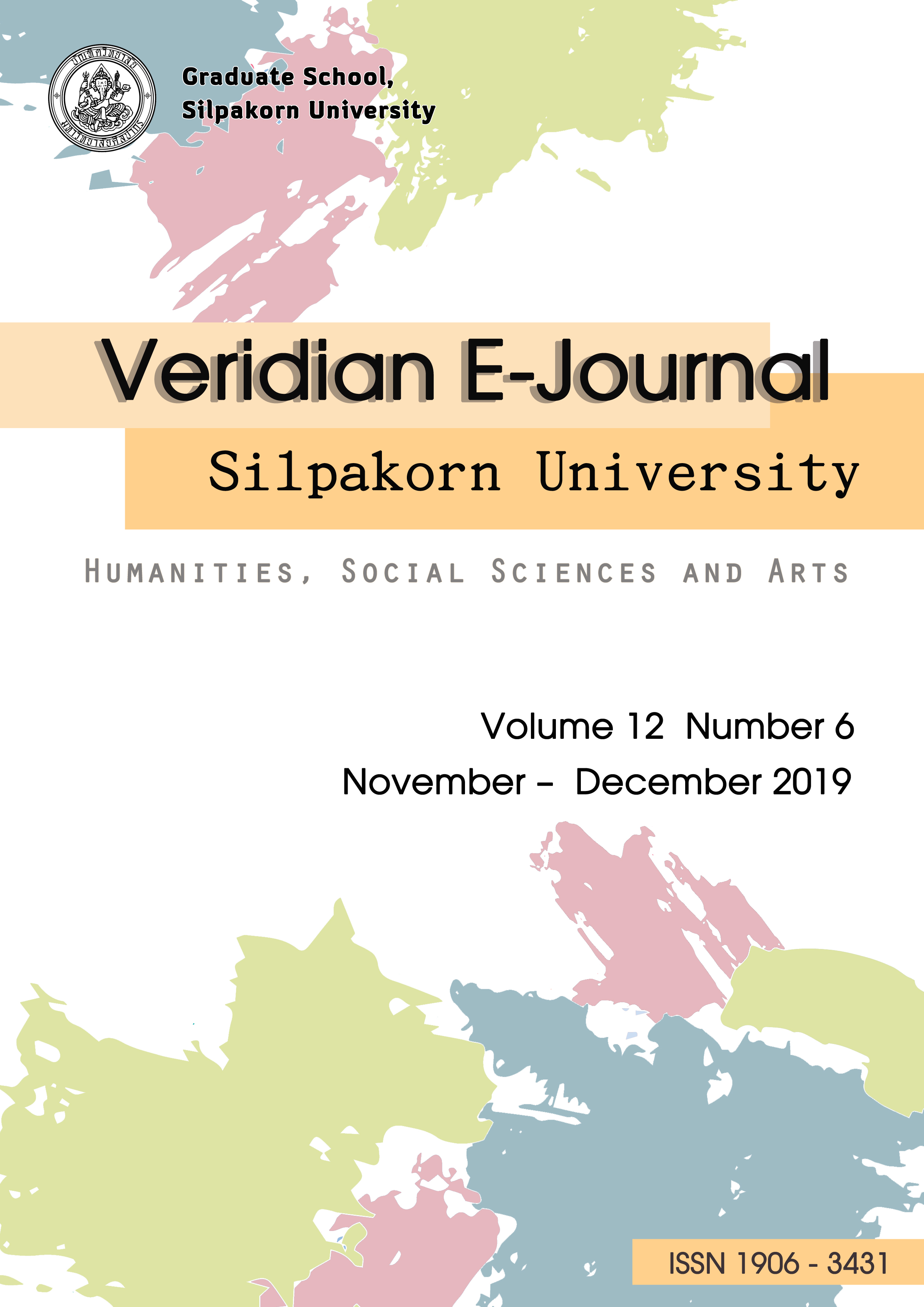พื้นที่แห่งการตื่นรู้ในงานประติมากรรมของแอนโทนี กอร์มลีย์ (The Space of Awareness in Anthony Gormley’s Sculptures)
Main Article Content
Abstract
บทความนี้มีความมุ่งหมายเพื่อศึกษา การแสดงออกถึงพื้นที่ว่างภายในงานประติมากรรม จำนวน 4 ชิ้น ของประติมากรชาวอังกฤษ แอนโธนี กอร์มลีย์ ที่สร้างสรรค์ขึ้นระหว่างช่วง ค.ศ. 1974 - 2002 ผลงาน ดังกล่าวคือ Sleeping Place (1974), Sense (1991), Learning to See III (1993) and Earthbound: Plant (2002) ด้วยวิธีการศึกษากระบวนการกลายรูปจากร่างกายไปเป็นพื้นที่ว่าง และการที่พื้นที่ว่างถูกเปิดเผยออกมา ในฐานะร่างกายที่หายไป ผลการศึกษาพบว่า พื้นที่ว่างในงานประติมากรรมแต่ละชิ้นนั้น คือจังหวะแห่งเวลาที่เฉพาะเจาะจงแห่งการตระหนักรู้ตามหลักคิดของพุทธศาสนาพื้นที่ว่างที่สัมพันธ์กับพื้นที่แห่งการตระหนักรู้นี้ เกิดขึ้นจากการใช้ร่างกายของศิลปินและท่วงท่าเป็นเครื่องมือผ่านกระบวนการทำแม่พิมพ์ของประติมากรรม ผู้ชมสามารถตั้งสมาธิจดจ่อระหว่างชมผลงาน เพื่อทำการสำรวจระดับการตระหนักรู้ของศิลปิน เช่นเดียวกันกับการสำรวจจิตใจของตนเองไปพร้อมกัน
This article aimed to study how space was represented in Anthony Gormley’s sculptures. The study scoped on 4 pieces of work from 1974 to 2002 A.D. which are Sleeping Place (1974), Sense (1991), Learning to See III (1993) and Earthbound: Plant (2002). The method focused on processes that human body was transformed into space and how space was revealed as a medium to remind viewers of the absence of the body. The finding of this study is that each distinctive space from each sculpture could be interpreted as a specific moment of awareness as in Buddhist thought. The space which related to the area of awareness emerged from utilising the artist’s body and postures as the tool through the mold making process of sculpture. The viewer could contemplate on specific piece of work to observe the artist’s level of awareness and how it is reflected to the viewer’s mind itself.
